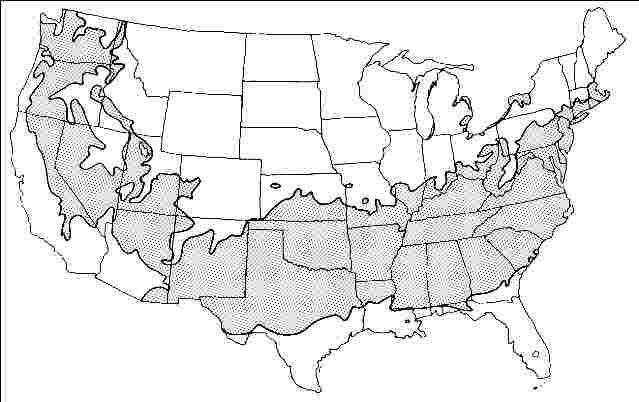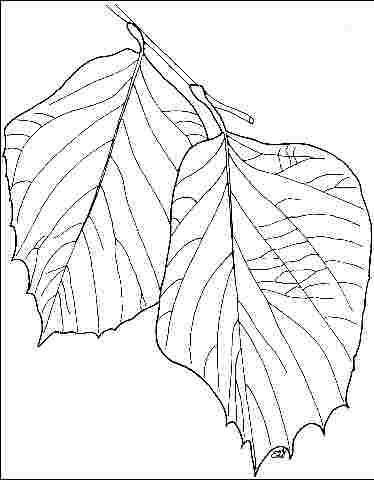Introduction
Styrax obassia gets its common name, fragrant snowbell, from the six to eight-inch-long raceme of fragrant, white, bell-shaped flowers produced May to June. Fragrant snowbell is a small, 20- to 30-foot tall, deciduous tree that is appropriate as a patio tree where the attractive bark with orange-brown vertical fissures can be appreciated at a close distance, or fragrant snowbell can add color to the mixed shrubbery border. The dark green leaves are not as attractive as Japanese snowbell since they are quite large (three to eight-inches-long) and somewhat hide the beauty of the flowers. For this reason alone, Japanese snowbell is preferred between the two species. Fragrant snowbell does not have good fall color and the fruit is insignificant.

Credit: Ed Gilman, UF/IFAS
General Information
Scientific name: Styrax obassia
Pronunciation: STY-racks oh-BAY-see-uh
Common name(s): Fragrant snowbell
Family: Styracaceae
USDA hardiness zones: 6A through 8A (Fig. 2)
Origin: not native to North America
Invasive potential: little invasive potential
Uses: reclamation; specimen; deck or patio
Availability: not native to North America

Description
Height: 20 to 30 feet
Spread: 15 to 25 feet
Crown uniformity: symmetrical
Crown shape: upright/erect, vase, oval
Crown density: moderate
Growth rate: moderate
Texture: coarse
Foliage
Leaf arrangement: alternate (Fig. 3)
Leaf type: simple
Leaf margin: dentate, serrate, entire
Leaf shape: ovate
Leaf venation: pinnate, brachidodrome
Leaf type and persistence: deciduous
Leaf blade length: 4 to 8 inches
Leaf color: green
Fall color: yellow
Fall characteristic: showy

Flower
Flower color: white/cream/gray
Flower characteristics: showy
Fruit
Fruit shape: oval, round
Fruit length: .5 to 1 inch
Fruit covering: fleshy
Fruit color: green
Fruit characteristics: does not attract wildlife; showy; fruit/leaves not a litter problem
Trunk and Branches
Trunk/bark/branches: branches droop; showy; typically multi-trunked; thorns
Pruning requirement: little required
Breakage: resistant
Current year twig color: reddish, brown, green
Current year twig thickness: thick
Wood specific gravity: unknown
Culture
Light requirement: full sun, partial sun, or partial shade
Soil tolerances: clay; sand; loam; acidic; well-drained
Drought tolerance: moderate
Aerosol salt tolerance: unknown
Other
Roots: not a problem
Winter interest: yes
Outstanding tree: yes
Ozone sensitivity: unknown
Verticillium wilt susceptibility: unknown
Pest resistance: free of serious pests and diseases
Use and Management
Styrax obassia requires a well-drained, peaty, acid soil. It often grows poorly in clay or compacted soil. In colder areas (USDA hardiness zone 6), locate Styrax obassia in an area protected from winter winds. Some protection from full day sun is preferable in the southern part of its range. Propagate by softwood cuttings in summer.
Pests and Diseases
No pests or diseases of major concern.